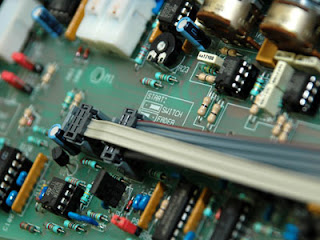Specifically a force. Gravity is the
name for a force between masses that we can feel and measure. Early workers observed that
bodies in "certain electrical condition" also exerted forces on one another that
they could measure, and they invented charge to explain their observations. Amazingly,
only three simple postulates or assumptions, plus some experimental observations, are
necessary to explain all electrical phenomena. Everything: currents, electronics, radio
waves, and light. Not many things are so simple, so it is worth stating the three
postulates clearly.
It's all about basic of electronic. Explain all the parts, units, laws in details to give you a very good idea about electronics.
Thursday, 18 April 2013
Basic information about electronic circuits
The goal of this chapter is to provide some basic information about electronic
circuits. You have no prior knowledge of electronics,
electricity, or circuits, and start from the basics. This is an unconventional approach,
so it may be interesting, even if you do have some experience. So,
the first question is ``What is an electronic circuit?'' A circuit is a structure that
directs and controls electric currents, presumably to perform some useful function. The
very name "circuit" implies that the structure is closed, something like a loop.
That is all very well, but this answer immediately raises a new question: "What is an
electric current?" Again, the name "current" indicates
that it refers to some type of flow, and in this case we mean a flow of electric charge,
which is usually just called charge because electric charge is really the only kind.........
Subscribe to:
Comments (Atom)

